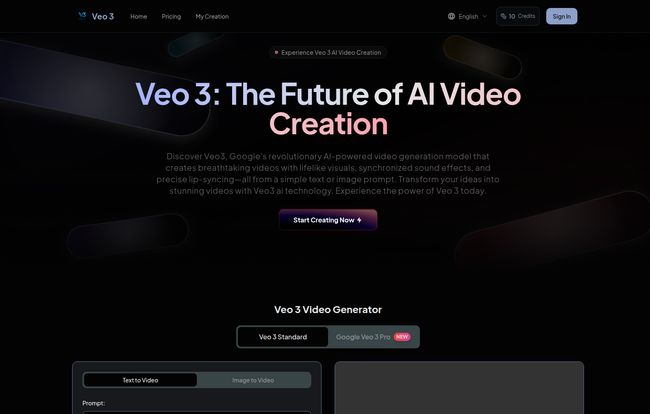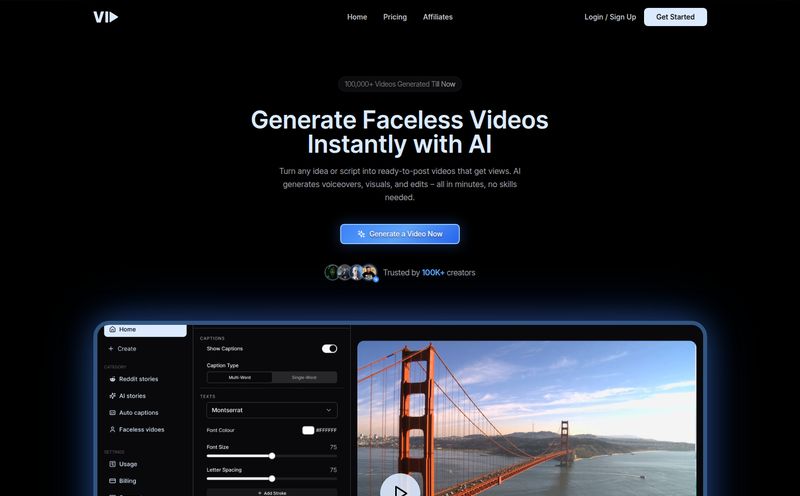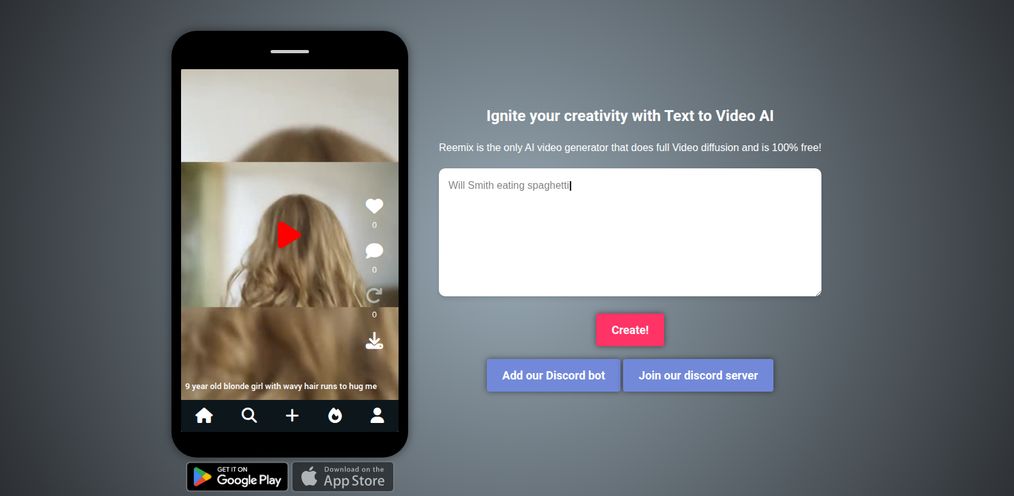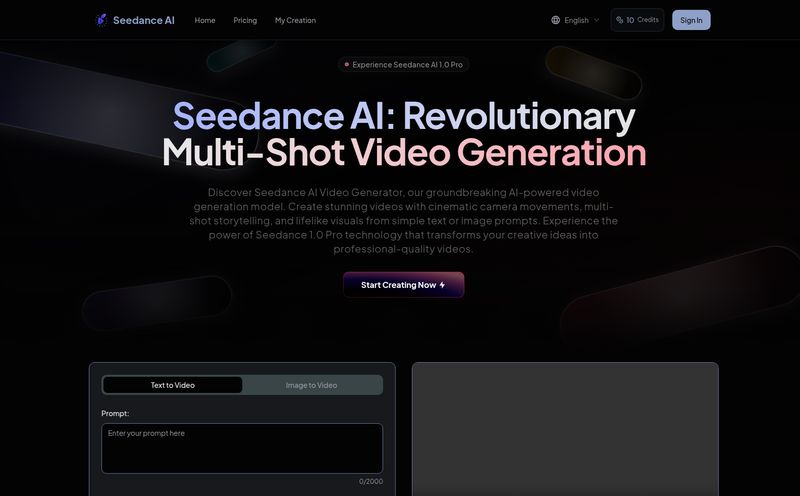For the past year, the content creation world has been absolutely buzzing—some might say obsessing—over AI video. We all saw the shockwaves from OpenAI's Sora. The clips were mind-blowing, the potential was staggering, and every marketer and filmmaker I know was simultaneously thrilled and a little bit terrified. It felt like the future arrived overnight. But then... silence. It was like getting a trailer for the biggest movie of the year and then finding out it's not coming out for ages.
Well, it looks like Google decided it wasn't going to be left out of the party. Enter Veo 3, Google's own heavyweight contender in the AI video generation ring. And I've got to say, after spending some time with it, this isn't just a copycat. It’s a completely different beast, and it might just be the one that actually changes how we create content on a day-to-day basis.
So, What Exactly is Veo 3?
In simple terms, Veo 3 is an AI model that turns your ideas—from a simple text prompt or even a single image—into stunningly realistic 4K video clips. Think of it as a production studio in a browser tab. But calling it just a "text-to-video tool" feels like a massive understatement. It's not just about creating a moving picture; it's about creating a scene.
We're talking about videos with synchronized sound effects, dialogue with frighteningly accurate lip-syncing, and a level of visual fidelity that, until recently, was pure science fiction. This is Google planting its flag, and they’ve built a tool that feels both powerful and, surprisingly, accessible.
The Veo 3 Features That Genuinely Impressed Me
Look, any new AI tool can flash some shiny features. But as someone who lives and breathes this stuff, I'm always looking for what's actually useful versus what's just marketing fluff. Veo 3 has a few things that really stand out.
Hollywood-Grade Visuals and Sound
First off, the quality. The tool generates in 4K, and the output is crisp. But the real magic is in the coherence. The AI seems to have a much better grasp of how objects and people should interact within a scene over time. You don't get as much of that weird, melty-morphing effect that plagues a lot of other AI video tools.
And the audio! This is a big one. Veo 3 doesn't just slap a generic soundtrack on your clip. It generates contextual sound—the roar of a dragon, the chatter of a cafe, the footsteps on gravel. Even more impressive is the precise lip-syncing. You can have a character speak dialogue, and the model actually matches the mouth movements. For anyone creating character-driven content, this is an absolute game-changer. No more awkward, dubbed-over looking animations.
You're the Director with Advanced Camera Controls
This is where my inner film nerd gets really excited. Most AI video tools give you a clip, and that’s it. You get what you get. Veo 3, on the other hand, gives you the keys to the camera dolly. You can specify camera movements right in your prompt. Want a slow pan across a landscape? A dramatic zoom-in on a character’s face? An aerial tracking shot following a car? You can do that. This single capability elevates it from a simple generator to a legitimate filmmaking tool for storyboarding and creating dynamic shots that would otherwise require a crew or complex animation software.
Trust and Transparency with SynthID
In an age of deepfakes and misinformation, knowing what's real and what's AI-generated is a huge deal. Google has integrated its SynthID technology, which adds an invisible, permanent watermark to all generated content. It’s a responsible move that I honestly wish more companies would adopt. It gives creators a layer of authenticity while helping to keep the digital ecosystem a little more honest. A definite plus in my book.
How Hard Is It To Actually Use?
For all its power, the process is ridiculously simple. It really boils down to three steps:
- Input Your Vision: You start with the prompt box. This is your script, your director's brief, and your cinematographer's shot list all in one. You can type something like, "A photorealistic close-up of an astronaut on Mars, a red dust storm swirling, with a slow zoom onto their helmet's visor reflecting the desolate landscape." Or you can upload a starting image and have the AI bring it to life.
- Customize with Ease: This is where you pick your aspect ratio (widescreen 16:9, vertical 9:16, etc.), set the video duration, and toggle sound on or off. Simple switches and buttons. No coding required.
- Generate & Share: You hit the generate button. The AI does its thing, and in a short while, you have a downloadable video clip, ready for your social feed, your YouTube channel, or your marketing campaign.

Visit Veo 3 AI
Alright, Let's Talk Turkey: What Does Veo 3 Cost?
Nothing in life is free, especially not cutting-edge AI. Veo 3 operates on a credit system, which seems to be the standard for these kinds of platforms. The generation I tried cost 10 credits for a 5-second clip. The pricing is structured in one-time payment tiers, which is a nice change from the endless subscription model for everything else.
Here’s the breakdown as of my last check on their pricing page:
| Plan | Price | Credits | Best For |
|---|---|---|---|
| Basic | $9.99 | 150 Credits | Individual creators and folks just wanting to experiment. Gives you enough to get a real feel for it. |
| Plus | $24.99 | 800 Credits | Serious creators, social media managers, and professionals who will be generating content regularly. This feels like the sweet spot. |
| Pro | $39.99 | 1800 Credits | Teams, small agencies, and businesses that need a high volume of video content for ads, prototypes, or marketing. |
All plans come with high-quality generation, audio, and no watermark, which is fantastic. The one-time payment for a month's worth of credits is a consumer-friendly move I can really get behind.
My Honest Take: The Good, The Bad, and The AI
So, is Veo 3 the perfect tool? No, of course not. Nothing is. The credit system, while fairly priced, means you're always conscious of the cost per click. It can stifle that freewheeling experimentation a little. And the video duration is still limited—the pricing page mentions up to 8-second videos, so you're not going to be making a feature film with it just yet. You're stitching together moments, not weaving a long narrative in one go.
But the good? It's really good. The level of control, the audio integration, and the sheer quality are a massive step forward. For a social media manager needing to pump out 10 different video ads for a campaign, this is a miracle. For a filmmaker wanting to quickly visualize a complex scene before a shoot, it’s an invaluable pre-production tool. It's not about replacing human creativity; it's about giving that creativity a wild new canvas to paint on.
I’ve always felt that the best tools are the ones that get out of your way and just let you create. Veo 3 is getting dangerously close to that ideal.
Frequently Asked Questions About Veo 3 AI
What is Veo 3 AI in a nutshell?
Veo 3 is Google's AI model that creates high-fidelity, 4K videos from text or image prompts. It's known for its realistic visuals, synchronized audio, and precise lip-syncing, making it a powerful tool for all kinds of creators.
Can Veo 3 create videos with sound?
Yes, and it's one of its best features. Veo 3 can generate immersive background audio that matches the scene and also handle character dialogue with accurate lip-syncing, creating a full audio-visual experience.
How much control do I have over the video?
A surprising amount. You can direct the 'camera' using prompts to create zooms, pans, and tracking shots. You also control aspect ratio and, of course, the entire visual and narrative content through your prompt engineering.
Is the AI-generated content identifiable?
Yes. Veo 3 uses Google's SynthID to apply an invisible watermark to all videos it creates. This helps ensure transparency and allows people to identify the content as AI-generated, which is a responsible approach in today's media environment.
Who is this tool really for?
It's for a wide range of people. Professional filmmakers can use it for storyboarding, content creators for making engaging social media posts, and businesses for producing dynamic marketing videos or product prototypes. If you work with video, there’s likely a use case for you.
What video resolution does Veo 3 support?
Veo 3 can generate videos up to a stunning 4K resolution. This provides cinematic quality with smooth motion and authentic physics, making your creative projects look incredibly professional.
The Future is Here, and It's Generating
Look, the AI video space is moving at a breakneck pace. What seems revolutionary today will be standard tomorrow. But right now, Veo 3 feels like a significant moment. It's a tool that is not just technically impressive but also thoughtfully designed for the people who will actually use it.
It bridges the gap between a wild tech demo and a practical, everyday creative asset. While it won't replace the need for skilled editors and visionary directors, it will certainly give them, and the rest of us, an incredible new paintbrush. And I, for one, can't wait to see the masterpieces people create with it.



